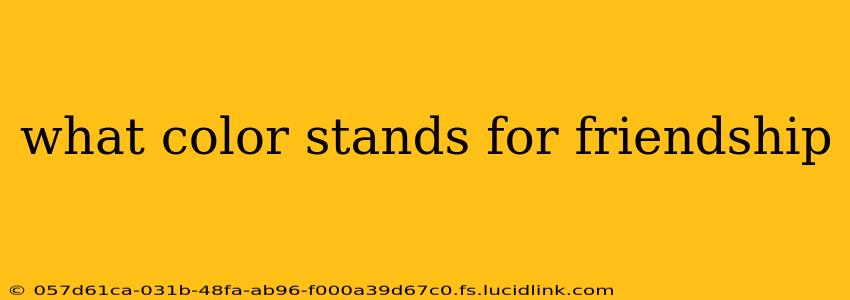What Color Stands for Friendship?
The color most strongly associated with friendship is green. While there isn't a universally agreed-upon "official" color for friendship, green consistently emerges as the top choice due to its symbolic connections with nature, growth, harmony, and renewal—all qualities deeply intertwined with the concept of friendship.
Let's delve deeper into why green, and other colors, are linked to friendship:
What makes green the color of friendship?
Green symbolizes many positive aspects that resonate with the essence of friendship:
- Nature and Growth: Green is the color of nature, representing growth, vitality, and the blossoming of relationships. Just as plants grow and flourish, so too do friendships nurtured with care and attention.
- Harmony and Balance: Green evokes a sense of calm and balance, reflecting the equilibrium needed for a healthy friendship. It signifies a peaceful coexistence and mutual respect between friends.
- Renewal and Hope: Green represents new beginnings and the potential for growth and renewal within a friendship. It suggests the enduring strength of a bond that can weather challenges and emerge stronger.
What other colors are associated with friendship?
While green reigns supreme, other colors also contribute to the broader emotional landscape of friendship, depending on the context and cultural interpretations:
- Yellow: Often associated with joy, optimism, and cheerfulness, yellow can represent the lighthearted and fun aspects of friendship. It symbolizes the shared laughter and happy memories created with friends.
- Blue: Blue often represents trust, loyalty, and stability, reflecting the dependable and reliable nature of strong friendships. A deep blue can also symbolize depth and emotional connection.
- Orange: Orange, a blend of yellow and red, represents enthusiasm, energy, and creativity. This could represent the exciting adventures and shared experiences that characterize many friendships.
What colors don't usually represent friendship?
Colors often associated with negative emotions are generally not linked to friendship. These include:
- Black: Typically associated with sadness, mourning, or mystery.
- Gray: Represents neutrality, indifference, or boredom.
- Brown: Often linked to dullness or earthiness, lacking the vibrancy typically associated with strong friendships.
Why are colors associated with emotions and concepts?
The association of colors with emotions and abstract concepts like friendship is a complex phenomenon rooted in psychology, culture, and personal experiences. Color psychology explores how different colors evoke different emotional responses in individuals, and these responses are often culturally reinforced through language, art, and symbolism. For example, the prevalence of green in nature, combined with its association with growth and renewal, has naturally led to its association with the similarly positive aspects of friendship.
Does the color of a gift matter when showing friendship?
While the color green might be symbolically linked to friendship, the color of a gift is far less important than the thoughtfulness and sincerity behind it. A thoughtful gesture, regardless of its color, will be far more meaningful in demonstrating friendship than a focus on color symbolism alone. The best gifts reflect the recipient's individual preferences and the unique nature of your friendship.
